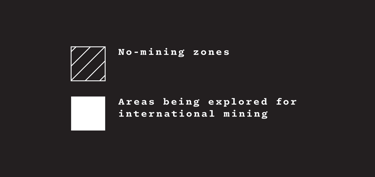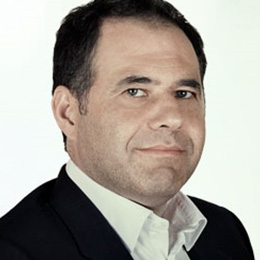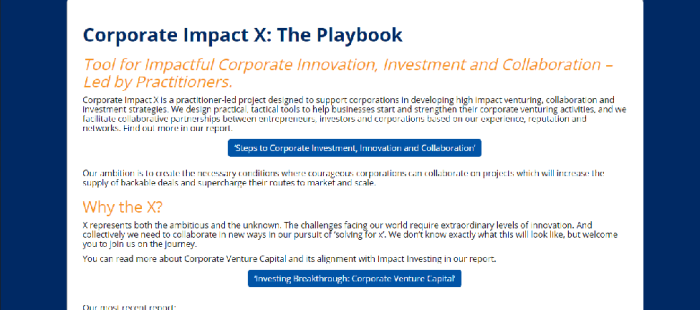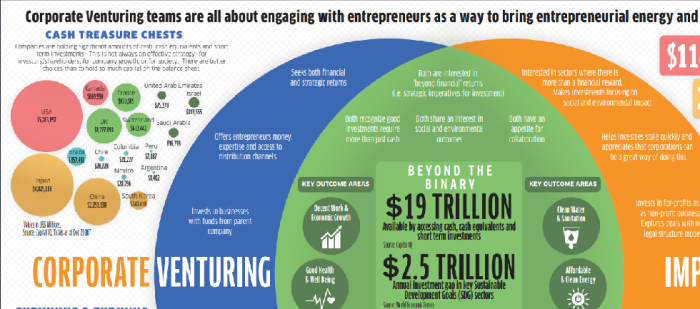Feb 03
20200
5G AI Biodiversity De Beers Group Fourth Industrial Revolution Global Green New Deal Green New Deal Industrial Civ International Seabed Authority Nautilus Minerals Oceans Robots Speciesism World Economic Forum
History’s Largest Mining Operation Is About to Begin. It’s Underwater—and the Consequences are Unimaginable.
JANUARY/FEBRUARY 2020 ISSUE
By Wil S. Hylton
Mining robots, such as these, will help unlock a subsea gold rush. Source: World Economic Forum
These peaks and valleys are laced with most of the same minerals found on land. Scientists have documented their deposits since at least 1868, when a dredging ship pulled a chunk of iron ore from the seabed north of Russia. Five years later, another ship found similar nuggets at the bottom of the Atlantic, and two years after that, it discovered a field of the same objects in the Pacific. For more than a century, oceanographers continued to identify new minerals on the seafloor—copper, nickel, silver, platinum, gold, and even gemstones—while mining companies searched for a practical way to dig them up.
Today, many of the largest mineral corporations in the world have launched underwater mining programs. On the west coast of Africa, the De Beers Group is using a fleet of specialized ships to drag machinery across the seabed in search of diamonds. In 2018, those ships extracted 1.4 million carats from the coastal waters of Namibia; in 2019, De Beers commissioned a new ship that will scrape the bottom twice as quickly as any other vessel. Another company, Nautilus Minerals, is working in the territorial waters of Papua New Guinea to shatter a field of underwater hot springs lined with precious metals, while Japan and South Korea have embarked on national projects to exploit their own offshore deposits. But the biggest prize for mining companies will be access to international waters, which cover more than half of the global seafloor and contain more valuable minerals than all the continents combined.
Regulations for ocean mining have never been formally established. The United Nations has given that task to an obscure organization known as the International Seabed Authority, which is housed in a pair of drab gray office buildings at the edge of Kingston Harbour, in Jamaica. Unlike most UN bodies, the ISA receives little oversight. It is classified as “autonomous” and falls under the direction of its own secretary general, who convenes his own general assembly once a year, at the ISA headquarters. For about a week, delegates from 168 member states pour into Kingston from around the world, gathering at a broad semicircle of desks in the auditorium of the Jamaica Conference Centre. Their assignment is not to prevent mining on the seafloor but to mitigate its damage—selecting locations where extraction will be permitted, issuing licenses to mining companies, and drafting the technical and environmental standards of an underwater Mining Code.
Writing the code has been difficult. ISA members have struggled to agree on a regulatory framework. While they debate the minutiae of waste disposal and ecological preservation, the ISA has granted “exploratory” permits around the world. Some 30 mineral contractors already hold licenses to work in sweeping regions of the Atlantic, Pacific, and Indian Oceans. One site, about 2,300 miles east of Florida, contains the largest system of underwater hot springs ever discovered, a ghostly landscape of towering white spires that scientists call the “Lost City.” Another extends across 4,500 miles of the Pacific, or roughly a fifth of the circumference of the planet. The companies with permits to explore these regions have raised breathtaking sums of venture capital. They have designed and built experimental vehicles, lowered them to the bottom, and begun testing methods of dredging and extraction while they wait for the ISA to complete the Mining Code and open the floodgates to commercial extraction.
At full capacity, these companies expect to dredge thousands of square miles a year. Their collection vehicles will creep across the bottom in systematic rows, scraping through the top five inches of the ocean floor. Ships above will draw thousands of pounds of sediment through a hose to the surface, remove the metallic objects, known as polymetallic nodules, and then flush the rest back into the water. Some of that slurry will contain toxins such as mercury and lead, which could poison the surrounding ocean for hundreds of miles. The rest will drift in the current until it settles in nearby ecosystems. An early study by the Royal Swedish Academy of Sciences predicted that each mining ship will release about 2 million cubic feet of discharge every day, enough to fill a freight train that is 16 miles long. The authors called this “a conservative estimate,” since other projections had been three times as high. By any measure, they concluded, “a very large area will be blanketed by sediment to such an extent that many animals will not be able to cope with the impact and whole communities will be severely affected by the loss of individuals and species.”
At the ISA meeting in 2019, delegates gathered to review a draft of the code. Officials hoped the document would be ratified for implementation in 2020. I flew down to observe the proceedings on a balmy morning and found the conference center teeming with delegates. A staff member ushered me through a maze of corridors to meet the secretary general, Michael Lodge, a lean British man in his 50s with cropped hair and a genial smile. He waved me toward a pair of armchairs beside a bank of windows overlooking the harbor, and we sat down to discuss the Mining Code, what it will permit and prohibit, and why the United Nations is preparing to mobilize the largest mining operation in the history of the world.
Until recently, marine biologists paid little attention to the deep sea. They believed its craggy knolls and bluffs were essentially barren. The traditional model of life on Earth relies on photosynthesis: plants on land and in shallow water harness sunlight to grow biomass, which is devoured by creatures small and large, up the food chain to Sunday dinner. By this account, every animal on the planet would depend on plants to capture solar energy. Since plants disappear a few hundred feet below sea level, and everything goes dark a little farther down, there was no reason to expect a thriving ecosystem in the deep. Maybe a light snow of organic debris would trickle from the surface, but it would be enough to sustain only a few wayward aquatic drifters.That theory capsized in 1977, when a pair of oceanographers began poking around the Pacific in a submersible vehicle. While exploring a range of underwater mountains near the Galápagos Islands, they spotted a hydrothermal vent about 8,000 feet deep. No one had ever seen an underwater hot spring before, though geologists suspected they might exist. As the oceanographers drew close to the vent, they made an even more startling discovery: A large congregation of animals was camped around the vent opening. These were not the feeble scavengers that one expected so far down. They were giant clams, purple octopuses, white crabs, and 10-foot tube worms, whose food chain began not with plants but with organic chemicals floating in the warm vent water.
For biologists, this was more than curious. It shook the foundation of their field. If a complex ecosystem could emerge in a landscape devoid of plants, evolution must be more than a heliological affair. Life could appear in perfect darkness, in blistering heat and a broth of noxious compounds—an environment that would extinguish every known creature on Earth. “That was the discovery event,” an evolutionary biologist named Timothy Shank told me. “It changed our view about the boundaries of life. Now we know that the methane lakes on one of Jupiter’s moons are probably laden with species, and there is no doubt life on other planetary bodies.”
Shank was 12 years old that winter, a bookish kid in North Carolina. The early romance of the space age was already beginning to fade, but the discovery of life near hydrothermal vents would inspire a blossoming of oceanography that captured his imagination. As he completed a degree in marine biology, then a doctorate in ecology and evolution, he consumed reports from scientists around the world who found new vents brimming with unknown species. They appeared far below the surface—the deepest known vent is about three miles down—while another geologic feature, known as a “cold seep,” gives rise to life in chemical pools even deeper on the seafloor. No one knew how far down the vents and seeps might be found, but Shank decided to focus his research on the deepest waters of the Earth.
Scientists divide the ocean into five layers of depth. Closest to the surface is the “sunlight zone,” where plants thrive; then comes the “twilight zone,” where darkness falls; next is the “midnight zone,” where some creatures generate their own light; and then there’s a frozen flatland known simply as “the abyss.” Oceanographers have visited these layers in submersible vehicles for half a century, but the final layer is difficult to reach. It is known as the “hadal zone,” in reference to Hades, the ancient Greek god of the underworld, and it includes any water that is at least 6,000 meters below the surface—or, in a more Vernian formulation, that is 20,000 feet under the sea. Because the hadal zone is so deep, it is usually associated with ocean trenches, but several deepwater plains have sections that cross into hadal depth.
Deepwater plains are also home to the polymetallic nodules that explorers first discovered a century and a half ago. Mineral companies believe that nodules will be easier to mine than other seabed deposits. To remove the metal from a hydrothermal vent or an underwater mountain, they will have to shatter rock in a manner similar to land-based extraction. Nodules are isolated chunks of rocks on the seabed that typically range from the size of a golf ball to that of a grapefruit, so they can be lifted from the sediment with relative ease. Nodules also contain a distinct combination of minerals. While vents and ridges are flecked with precious metal, such as silver and gold, the primary metals in nodules are copper, manganese, nickel, and cobalt—crucial materials in modern batteries. As iPhones and laptops and electric vehicles spike demand for those metals, many people believe that nodules are the best way to migrate from fossil fuels to battery power.
The ISA has issued more mining licenses for nodules than for any other seabed deposit. Most of these licenses authorize contractors to exploit a single deepwater plain. Known as the Clarion-Clipperton Zone, or CCZ, it extends across 1.7 million square miles between Hawaii and Mexico—wider than the continental United States. When the Mining Code is approved, more than a dozen companies will accelerate their explorations in the CCZ to industrial-scale extraction. Their ships and robots will use vacuum hoses to suck nodules and sediment from the seafloor, extracting the metal and dumping the rest into the water. How many ecosystems will be covered by that sediment is impossible to predict. Ocean currents fluctuate regularly in speed and direction, so identical plumes of slurry will travel different distances, in different directions, on different days. The impact of a sediment plume also depends on how it is released. Slurry that is dumped near the surface will drift farther than slurry pumped back to the bottom. The circulating draft of the Mining Code does not specify a depth of discharge. The ISA has adopted an estimate that sediment dumped near the surface will travel no more than 62 miles from the point of release, but many experts believe the slurry could travel farther. A recent survey of academic research compiled by Greenpeace concluded that mining waste “could travel hundreds or even thousands of kilometers.”
Like many deepwater plains, the CCZ has sections that lie at hadal depth. Its eastern boundary is marked by a hadal trench. No one knows whether mining sediment will drift into the hadal zone. As the director of a hadal-research program at the Woods Hole Oceanographic Institution, in Massachusetts, Timothy Shank has been studying the deep sea for almost 30 years. In 2014, he led an international mission to complete the first systematic study of the hadal ecosystem—but even Shank has no idea how mining could affect the hadal zone, because he still has no idea what it contains. If you want a sense of how little we know about the deep ocean, how difficult it is to study, and what’s at stake when industry leaps before science, Shank’s research is a good place to start.
Ifirst met shank about seven years ago, when he was organizing the international mission to survey the hadal zone. He had put together a three-year plan to visit every ocean trench: sending a robotic vehicle to explore their features, record every contour of topography, and collect specimens from each. The idea was either dazzling or delusional; I wasn’t sure which. Scientists have enough trouble measuring the seabed in shallower waters. They have used ropes and chains and acoustic instruments to record depth for more than a century, yet 85 percent of the global seabed remains unmapped—and the hadal is far more difficult to map than other regions, since it’s nearly impossible to see.If it strikes you as peculiar that modern vehicles cannot penetrate the deepest ocean, take a moment to imagine what it means to navigate six or seven miles below the surface. Every 33 feet of depth exerts as much pressure as the atmosphere of the Earth, so when you are just 66 feet down, you are under three times as much pressure as a person on land, and when you are 300 feet down, you’re subjected to 10 atmospheres of pressure. Tube worms living beside hydrothermal vents near the Galápagos are compressed by about 250 atmospheres, and mining vehicles in the CCZ have to endure twice as much—but they are still just half as far down as the deepest trenches.
Building a vehicle to function at 36,000 feet, under 2 million pounds of pressure per square foot, is a task of interstellar-type engineering. It’s a good deal more rigorous than, say, bolting together a rover to skitter across Mars. Picture the schematic of an iPhone case that can be smashed with a sledgehammer more or less constantly, from every angle at once, without a trace of damage, and you’re in the ballpark—or just consider the fact that more people have walked on the moon than have reached the bottom of the Mariana Trench, the deepest place on Earth.
The first two people descended in 1960, using a contraption owned by the U.S. Navy. It seized and shuddered on the descent. Its window cracked as the pressure mounted, and it landed with so much force that it kicked up a cloud of silt that obscured the view for the entire 20 minutes the pair remained on the bottom. Half a century passed before the film director James Cameron repeated their journey, in 2012. Unlike the swaggering billionaire Richard Branson, who was planning to dive the Mariana in a cartoonish vehicle shaped like a fighter jet, Cameron is well versed in ocean science and engineering. He was closely involved in the design of his submarine, and sacrificed stylistic flourishes for genuine innovations, including a new type of foam that maintains buoyancy at full ocean depth. Even so, his vessel lurched and bucked on the way down. He finally managed to land, and spent a couple of hours collecting sediment samples before he noticed that hydraulic fluid was leaking onto the window. The vehicle’s mechanical arm began to fail, and all of the thrusters on its right side went out—so he returned to the surface early, canceled his plan for additional dives, and donated the broken sub to Woods Hole.

I reached out to Shank in 2013, a few months before the expedition began. I wanted to write about the project, and he agreed to let me join him on a later leg. When his ship departed, in the spring of 2014, I followed online as it pursued a course to the Kermadec Trench, in the Pacific, and Shank began sending Nereus on a series of dives. On the first, it descended to 6,000 meters, a modest target on the boundary of the hadal zone. On the second, Shank pushed it to 7,000 meters; on the third to 8,000; and on the fourth to 9,000. He knew that diving to 10,000 meters would be a crucial threshold. It is the last full kilometer of depth on Earth: No trench is believed to be deeper than 11,000 meters. To commemorate this final increment and the successful beginning of his project, he attached a pair of silver bracelets to the frame of Nereus, planning to give them to his daughters when he returned home. Then he dropped the robot in the water and retreated to the control room to monitor its movements.
On-screen, blue water gave way to darkness as Nereus descended, its headlamps illuminating specks of debris suspended in the water. It was 10 meters shy of the 10,000-meter mark when suddenly the screen went dark. There was an audible gasp in the control room, but no one panicked. Losing the video feed on a dive was relatively common. Maybe the fiber-optic tether had snapped, or the software had hit a glitch. Whatever it was, Nereus had been programmed to respond with emergency measures. It could back out of a jam, shed expendable weight, guide itself to the surface, and send a homing beacon to help Shank’s team retrieve it.
As the minutes ticked by, Shank waited for those measures to activate, but none did. “There’s no sound, no implosion, no chime,” he told me afterward. “Just … black.” He paced the deck through the night, staring across the Stygian void for signs of Nereus. The following day he finally saw debris surface, and as he watched it rise, he felt his project sinking. Ten years of planning, a $14 million robot, and an international team of experts—it had all collapsed under the crushing pressure of hadal depths.
“I’m not over it yet,” he told me two years later. We were standing on the deck of another ship, 100 miles off the coast of Massachusetts, where Shank was preparing to launch a new robot. The vehicle was no replacement for Nereus. It was a rectilinear hunk of metal and plastic, about five feet high, three feet wide, and nine feet long. Red on top, with a silvery bottom and three fans mounted at the rear, it could have been mistaken for a child’s backyard spaceship. Shank had no illusion that it was capable of hadal exploration. Since the loss of Nereus, there was no vehicle on Earth that could navigate the deepest trenches—Cameron’s was no longer in service, Branson’s didn’t work, and Vescovo’s hadn’t yet been built.
Shank’s new robot did have a few impressive features. Its navigational system was even more advanced than the one in Nereus, and he hoped it would be able to maneuver in a trenchlike environment with even greater precision—but its body was not designed to withstand hadal pressure. In fact, it had never descended more than a few dozen feet below the surface, and Shank knew that it would take years to build something that could survive at the bottom of a trench. What had seemed, just two years earlier, like the beginning of a new era in hadal science was developing a quixotic aspect, and, at 50, Shank could not help wondering if it was madness to spend another decade of his life on a dream that seemed to be drifting further from his reach. But he was driven by a lifelong intuition that he still couldn’t shake. Shank believes that access to the trenches will reveal one of the greatest discoveries in history: a secret ecosystem bursting with creatures that have been cloistered for eternity in the deep.
“I would be shocked if there aren’t vents and seeps in the trenches,” he told me as we bobbed on the water that day in 2016. “They’ll be there, and they will be teeming with life. I think we’ll be looking at hundreds or thousands of species we haven’t seen before, and some of them are going to be huge.” He pictured the hadal as an alien world that followed its own evolutionary course, the unimaginable pressure creating a menagerie of inconceivable beasts. “My time is running out to find them,” he said. “Maybe my legacy will be to push things forward so that somebody else can. We have a third of our ocean that we still can’t explore. It’s embarrassing. It’s pathetic.”
While scientists struggle to reach the deep ocean, human impact has already gotten there. Most of us are familiar with the menu of damages to coastal water: overfishing, oil spills, and pollution, to name a few. What can be lost in the discussion of these issues is how they reverberate far beneath.Take fishing. The relentless pursuit of cod in the early 20th century decimated its population from Newfoundland to New England, sending hungry shoppers in search of other options. As shallow-water fish such as haddock, grouper, and sturgeon joined the cod’s decline, commercial fleets around the world pushed into deeper water. Until the 1970s, the slimehead fish lived in relative obscurity, patrolling the slopes of underwater mountains in water up to 6,000 feet deep. Then a consortium of fishermen pushed the Food and Drug Administration to change its name, and the craze for “orange roughy” began—only to fade again in the early 2000s, when the fish was on a path toward extinction itself.
Environmental damage from oil production is also migrating into deeper water. Disturbing photographs of oil-drenched beaches have captured public attention since at least 1989, when the Exxon Valdez tanker crashed into a reef and leaked 11 million gallons into an Alaskan sound. It would remain the largest spill in U.S. water until 2010, when the Deepwater Horizon explosion spewed 210 million gallons into the Gulf of Mexico. But a recent study revealed that the release of chemicals to disperse the spill was twice as toxic as the oil to animals living 3,000 feet below the surface.
Maybe the greatest alarm in recent years has followed the discovery of plastic floating in the ocean. Scientists estimate that 17 billion pounds of polymer are flushed into the ocean each year, and substantially more of it collects on the bottom than on the surface. Just as a bottle that falls from a picnic table will roll downhill to a gulch, trash on the seafloor gradually makes its way toward deepwater plains and hadal trenches. After his expedition to the trenches, Victor Vescovo returned with the news that garbage had beaten him there. He found a plastic bag at the bottom of one trench, a beverage can in another, and when he reached the deepest point in the Mariana, he watched an object with a large S on the side float past his window. Trash of all sorts is collecting in the hadal—Spam tins, Budweiser cans, rubber gloves, even a mannequin head.
Scientists are just beginning to understand the impact of trash on aquatic life. Fish and seabirds that mistake grocery bags for prey will glut their stomachs with debris that their digestive system can’t expel. When a young whale drifted ashore and died in the Philippines in 2019, an autopsy revealed that its belly was packed with 88 pounds of plastic bags, nylon rope, and netting. Two weeks later, another whale beached in Sardinia, its stomach crammed with 48 pounds of plastic dishes and tubing. Certain types of coral like to eat plastic more than food. They will gorge themselves like a kid on Twinkies instead of eating what they need to survive. Microbes that flourish on plastic have ballooned in number, replacing other species as their population explodes in a polymer ocean.
If it seems trivial to worry about the population statistics of bacteria in the ocean, you may be interested to know that ocean microbes are essential to human and planetary health. About a third of the carbon dioxide generated on land is absorbed by underwater organisms, including one species that was just discovered in the CCZ in 2018. The researchers who found that bacterium have no idea how it removes carbon from the environment, but their findings show that it may account for up to 10 percent of the volume that is sequestered by oceans every year.
Many of the things we do know about ocean microbes, we know thanks to Craig Venter, the genetic scientist most famous for starting a small company in the 1990s to compete with the Human Genome Project. The two-year race between his company and the international collaboration generated endless headlines and culminated in a joint announcement at the White House to declare a tie. But Venter’s interest wasn’t limited to human DNA. He wanted to learn the language of genetics in order to create synthetic microbes with practical features. After his work on the human genome, he spent two years sailing around the world, lowering bottles into the ocean to collect bacteria and viruses from the water. By the time he returned, he had discovered hundreds of thousands of new species, and his lab in Maryland proceeded to sequence their DNA—identifying more than 60 million unique genes, which is about 2,500 times the number in humans. Then he and his team began to scour those genes for properties they could use to make custom bugs.
Venter now lives in a hypermodern house on a bluff in Southern California. Chatting one evening on the sofa beside the door to his walk-in humidor and wine cellar, he described how saltwater microbes could help solve the most urgent problems of modern life. One of the bacteria he pulled from the ocean consumes carbon and excretes methane. Venter would like to integrate its genes into organisms designed to live in smokestacks and recycle emissions. “They could scrub the plant’s CO2 and convert it to methane that can be burned as fuel in the same plant,” he said.
Venter was also studying bacteria that could be useful in medicine. Microbes produce a variety of antibiotic compounds, which they deploy as weapons against their rivals. Many of those compounds can also be used to kill the pathogens that infect humans. Nearly all of the antibiotic drugs on the market were initially derived from microorganisms, but they are losing efficacy as pathogens evolve to resist them. “We have new drugs in development,” Matt McCarthy, an infectious-disease specialist at Weill Cornell Medical College, told me, “but most of them are slight variations on the ones we already had. The problem with that is, they’re easy for bacteria to resist, because they’re similar to something bacteria have developed resistance to in the past. What we need is an arsenal of new compounds.”
Venter pointed out that ocean microbes produce radically different compounds from those on land. “There are more than a million microbes per milliliter of seawater,” he said, “so the chance of finding new antibiotics in the marine environment is high.” McCarthy agreed. “The next great drug may be hidden somewhere deep in the water,” he said. “We need to get to the deep-sea organisms, because they’re making compounds that we’ve never seen before. We may find drugs that could be used to treat gout, or rheumatoid arthritis, or all kinds of other conditions.”
Marine biologists have never conducted a comprehensive survey of microbes in the hadal trenches. The conventional tools of water sampling cannot function at extreme depth, and engineers are just beginning to develop tools that can. Microbial studies of the deepwater plains are slightly further along—and scientists have recently discovered that the CCZ is unusually flush with life. “It’s one of the most biodiverse areas that we’ve ever sampled on the abyssal plains,” a University of Hawaii oceanographer named Jeff Drazen told me. Most of those microbes, he said, live on the very same nodules that miners are planning to extract. “When you lift them off the seafloor, you’re removing a habitat that took 10 million years to grow.” Whether or not those microbes can be found in other parts of the ocean is unknown. “A lot of the less mobile organisms,” Drazen said, “may not be anywhere else.”
Drazen is an academic ecologist; Venter is not. Venter has been accused of trying to privatize the human genome, and many of his critics believe his effort to create new organisms is akin to playing God. He clearly doesn’t have an aversion to profit-driven science, and he’s not afraid to mess with nature—yet when I asked him about the prospect of mining in deep water, he flared with alarm. “We should be very careful about mining in the ocean,” he said. “These companies should be doing rigorous microbial surveys before they do anything else. We only know a fraction of the microbes down there, and it’s a terrible idea to screw with them before we know what they are and what they do.”


Mining executives insist that their work in the ocean is misunderstood. Some adopt a swaggering bravado and portray the industry as a romantic frontier adventure. As the manager of exploration at Nautilus Minerals, John Parianos, told me recently, “This is about every man and his dog filled with the excitement of the moon landing. It’s like Scott going to the South Pole, or the British expeditions who got entombed by ice.”
His case for seabed mining is straightforward. Barron believes that the world will not survive if we continue burning fossil fuels, and the transition to other forms of power will require a massive increase in battery production. He points to electric cars: the batteries for a single vehicle require 187 pounds of copper, 123 pounds of nickel, and 15 pounds each of manganese and cobalt. On a planet with 1 billion cars, the conversion to electric vehicles would require several times more metal than all existing land-based supplies—and harvesting that metal from existing sources already takes a human toll. Most of the world’s cobalt, for example, is mined in the southeastern provinces of the Democratic Republic of Congo, where tens of thousands of young children work in labor camps, inhaling clouds of toxic dust during shifts up to 24 hours long. Terrestrial mines for nickel and copper have their own litany of environmental harms. Because the ISA is required to allocate some of the profits from seabed mining to developing countries, the industry will provide nations that rely on conventional mining with revenue that doesn’t inflict damage on their landscapes and people.
By the time i sat down with Michael Lodge, the secretary general of the ISA, I had spent a lot of time thinking about the argument that executives like Barron are making. It seemed to me that seabed mining presents an epistemological problem. The harms of burning fossil fuels and the impact of land-based mining are beyond dispute, but the cost of plundering the ocean is impossible to know. What creatures are yet to be found on the seafloor? How many indispensable cures? Is there any way to calculate the value of a landscape we know virtually nothing about? The world is full of uncertain choices, of course, but the contrast between options is rarely so stark: the crisis of climate change and immiserated labor on the one hand, immeasurable risk and potential on the other.
I thought of the hadal zone. It may never be harmed by mining. Sediment from dredging on the abyssal plains could settle long before it reaches the edge of a trench—but the total obscurity of the hadal should remind us of how little we know. It extends from 20,000 feet below sea level to roughly 36,000 feet, leaving nearly half of the ocean’s depths beyond our reach. When I visited Timothy Shank at Woods Hole a few months ago, he showed me a prototype of his latest robot. He and his lead engineer, Casey Machado, had built it with foam donated by James Cameron and with support from NASA’s Jet Propulsion Laboratory, whose engineers are hoping to send a vehicle to explore the aqueous moon of Jupiter. It was a tiny machine, known as Orpheus, that could steer through trenches, recording topography and taking samples, but little else. He would have no way to direct its movements or monitor its progress via a video feed. It occurred to me that if Shank had given up the dream of true exploration in the trenches, decades could pass before we know what the hadal zone contains.
Mining companies may promise to extract seabed metal with minimal damage to the surrounding environment, but to believe this requires faith. It collides with the force of human history, the law of unintended consequences, and the inevitability of mistakes. I wanted to understand from Michael Lodge how a UN agency had made the choice to accept that risk.
“Why is it necessary to mine the ocean?” I asked him.
He paused for a moment, furrowing his brow. “I don’t know why you use the word necessary,” he said. “Why is it ‘necessary’ to mine anywhere? You mine where you find metal.”
I reminded him that centuries of mining on land have exacted a devastating price: tropical islands denuded, mountaintops sheared off, groundwater contaminated, and species eradicated. Given the devastation of land-based mining, I asked, shouldn’t we hesitate to mine the sea?
“I don’t believe people should worry that much,” he said with a shrug. “There’s certainly an impact in the area that’s mined, because you are creating an environmental disturbance, but we can find ways to manage that.” I pointed out that the impact from sediment could travel far beyond the mining zone, and he responded, “Sure, that’s the other major environmental concern. There is a sediment plume, and we need to manage it. We need to understand how the plume operates, and there are experiments being done right now that will help us.” As he spoke, I realized that for Lodge, none of these questions warranted reflection—or anyway, he didn’t see reflection as part of his job. He was there to facilitate mining, not to question the wisdom of doing so.
We chatted for another 20 minutes, then I thanked him for his time and wandered back to the assembly room, where delegates were delivering canned speeches about marine conservation and the promise of battery technology. There was still some debate about certain details of the Mining Code—technical requirements, oversight procedures, the profit-sharing model—so the vote to ratify it would have to wait another year. I noticed a group of scientists watching from the back. They were members of the Deep-Ocean Stewardship Initiative, which formed in 2013 to confront threats to the deepwater environment. One was Jeff Drazen. He’d flown in from Hawaii and looked tired. I sent him a text, and we stepped outside.
A few tables and chairs were scattered in the courtyard, and we sat down to talk. I asked how he felt about the delay of the Mining Code—delegates are planning to review it again this summer, and large-scale mining could begin after that.
Drazen rolled his eyes and sighed. “There’s a Belgian team in the CCZ doing a component test right now,” he said. “They’re going to drive a vehicle around on the seafloor and spew a bunch of mud up. So these things are already happening. We’re about to make one of the biggest transformations that humans have ever made to the surface of the planet. We’re going to strip-mine a massive habitat, and once it’s gone, it isn’t coming back.”
[Wil S. Hylton is a contributing writer for The New York Times Magazine. He has published cover stories for many outlets including The New Yorker, Rolling Stone, Esquire, Harper’s, Details, New York, and Outside.]






















































